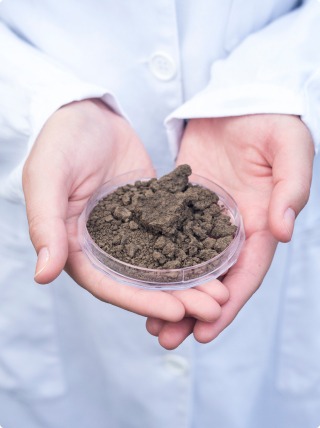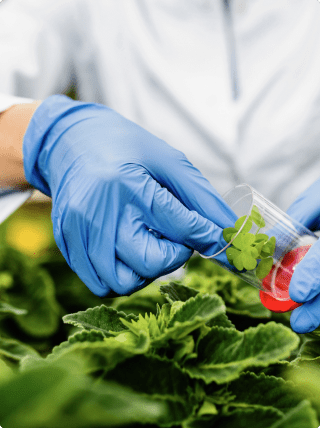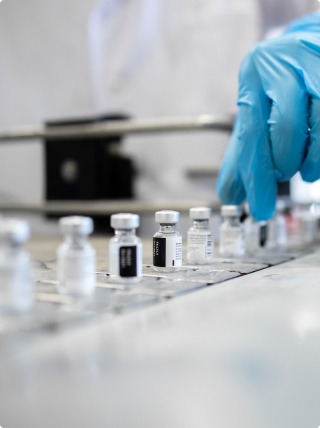APPLICATIONS
Metal speciation by ICP-MS
What is metal speciation?
Metal speciation refers to the identification and quantification of different chemical forms of a metal, including free ions and those complexed with ligands or biomolecules. These various forms can exist in solid, liquid, or gaseous phases and play a crucial role in determining the metal’s mobility, reactivity, and toxicity in the environment.
Metal Speciation by ICP-MS
Inductively Coupled Plasma Mass Spectrometry (ICP-MS) is a powerful technique for analyzing metal speciation. The process typically involves:
- Chromatographic Separation: Techniques such as Gas Chromatography (GC) or High-Performance Liquid Chromatography (HPLC) are used to separate different species of a metal. This separation is achieved using a chromatographic column coupled with ICP-MS, which isolates various species of the same metal before they are analyzed.
- ICP-MS Detection: Once separated, the metal species are detected and quantified using ICP-MS. This technique offers exceptional sensitivity and precision, allowing for accurate analysis of trace metal species.
ISC-SCIENCE Expertise
At ISC-SCIENCE, we have over 15 years of experience in implementing metal speciation methodologies. Our specialization includes four key metals:
- Mercury (Hg)
- Arsenic (As)
- Tin (Sn)
- Chromium (Cr)
Our expertise lies in using advanced separation techniques in conjunction with ICP-MS to ensure accurate and reliable quantification of these metal species.
For more details or to discuss your specific requirements, please contact us.
Mercury speciation (Hg)
General information on Hg species
Mercury (Hg) exists in three primary oxidation states:
- Elemental Mercury (Hg(0)): The gaseous form of mercury.
- Mercurous Mercury (Hg(I)): Exists as a dimer (Hg₂²⁺).
- Mercuric Mercury (Hg(II)): The divalent inorganic form.
In the environment, elemental mercury (Hg(0)) is typically oxidized to mercuric mercury (Hg(II)) due to the lack of strong oxidizing agents. Once formed, Hg(II) can further react to create organomercury compounds through covalent bonds with carbon atoms such as:
- Monomethylmercury (CH₃-Hg⁺, MeHg): Soluble in water.
- Dimethylmercury (CH₃-Hg-CH₃, DMeHg): Volatile with chemical properties similar to Hg(0). Both MeHg and DMeHg are stable against atmospheric oxidation and hydrolysis but may degrade under light or heat.
- Other organomercury compounds include ethylmercury (EtHg) and phenylmercury (Ph-Hg).
Analysis of Hg species
The simultaneous determination of Hg(II), MeHg, and EtHg is typically carried out using:
- Gas Chromatography (GC) or Liquid Chromatography (LC): Coupled online with Inductively Coupled Plasma Mass Spectrometry (ICP-MS). GC-ICP-MS is often preferred for its lower detection limits.
Sample Preparation:
- Derivatization: For analyzing Hg(II), MeHg, and EtHg, derivatization is required. In this process, mercury compounds are usually propylated or ethylated and then transferred into an organic solvent before injection into the GC port. This step can sometimes lead to degradation or loss of mercury compounds due to incomplete recovery during derivatization.
Quantification Methods:
- Calibration Approaches: Mercury compounds can be quantified using various methods, including external calibration, standard additions, or internal standards. However, only the use of isotopically enriched mercury species allows correcting Hg losses and Hg species interconversion during the sample preparation to ensure reliable results.
ISC-SCIENCE produces and commercializes enriched Hg species. Check out our product list.
For more detailed information or assistance with mercury speciation analysis, please contact us.
Applications
ISC-SCIENCE has implemented Hg speciation applications in different analytical laboratories. The main fields of application in which our team is specialized are:

ENVIRONMENTAL ANALYSIS
- Freshwater and wastewater Analysis.
- Soil, Sediment and Sludge Analysis.
- Atmospheric particles Analysis.

AGRO-FOOD ANALYSIS
- Drinking Water Analysis.
- Food Analysis.
- Animal Feed Analysis.

ANALYSIS IN THE PHARMACEUTICAL INDUSTRY
- Determination of metals according to USP and ICH standards.
Chromium (Cr) speciation
General information on Cr
Chromium primarily exists in two oxidation states:
- Chromium (III) [Cr(III)]: The trivalent form of chromium, essential for human health. It involves in glucose metabolism, insulin function, and protein synthesis.
- Chromium (VI) [Cr(VI)]: The hexavalent form, classified as a Group A human carcinogen. It poses severe health risks to the respiratory system, liver, kidneys, and gastrointestinal and immune systems. Consequently, various European and international directives mandate chromium speciation studies.
Analysis of Cr
Chromium species are typically analyzed using:
- Anion-Exchange Liquid Chromatography coupled with Inductively Coupled Plasma Mass Spectrometry (ICP-MS).
Challenges and Solutions:
A significant challenge in chromium speciation is the interconversion of chromium species during sample preparation, influenced by the matrix type and extraction solution.
- Chromium (VI) in Consumer Products: Accurate determination of Cr(VI) in consumer products, such as toys, is crucial due to potential health risks, particularly for children. The Directive (EU) 2018/725 requires precise measurement to assess oral cancer risk. To correct redox interconversion between Cr(III) and Cr(VI) during the sample preparation and the chromatographic separation, isotopically enriched Cr species must be used.
- Chromium (VI) in Soil Samples: Analyzing Cr(VI) in soil involves complexities. The USEPA Method 6800 standardizes the procedure, which includes adding known amounts of isotopically enriched Cr(III) and Cr(VI) to samples before sample preparation. This approach ensures an accurate quantification of Cr species and correct their interconversion.
ISC-SCIENCE produces and commercializes enriched Cr species. Check out our product list.
For more detailed information or assistance with chromium speciation analysis, please contact us.
Applications
ISC-SCIENCE has implemented Cr speciation applications in different analytical laboratories. The main fields of application in which our team is specialized are:

Analysis of consumer goods
- Toys Analysis.
- Textile Analysis.

Environmental analysis.
- Water Analysis.
- Soil Analysis.
Speciation of arsenic (As)
General information on As species
The toxicity of arsenic is highly dependent on its oxidation state and whether it is complexed as an organometallic compound. The most toxic forms are the inorganic species:
- Arsenic(III) [As(III)]
- Arsenic(V) [As(V)]
These inorganic species can lead to severe health issues, including dermatitis, skin cancer, and other types of cancer.
Analysis of As species
Arsenic is naturally found in soils and can accumulate in plants, such as rice. Given rice’s global consumption, regulatory limits for inorganic arsenicare set by European legislation, specifically outlined in REGULATION (EU) 2015/1006 on June 25th.
To accurately determine arsenic species, the preferred analytical technique involves:
- The As species separation using Anion-Exchange Liquid Chromatography.
- The detection via Inductively Coupled Plasma Mass Spectrometry (ICP-MS).
ISC-SCIENCE has extensive expertise implementing this analytical methodology in several laboratories. For more detailed information or assistance with arsenic speciation analysis, please contact us.
Applications
ISC-SCIENCE has implemented As speciation applications in different analytical laboratories. The main fields of application in which our team is specialized are:

AGRO-FOOD ANALYSIS
- Food Analysis (Rice).

Environmental analysis
- Water Analysis.
- Soil Analysis.
Tin (Sn) speciation
General information on Sn species
Tributyltin (TBT) and its degradation products—dibutyltin (DBT) and monobutyltin (MBT)—are recognized for their high toxicity. TBT was used as a biocide in marine environments, functioning as a fungicide, bactericide, insecticide, and wood preservative. Its widespread application in anti-fouling paints for ships led to its accumulation in maritime areas like harbors and marinas, where it severely impacts aquatic life, including microalgae, mollusks, crustaceans, fish, and invertebrates. Due to these environmental concerns, many countries have imposed restrictions on TBT to protect marine ecosystems.
Analysis of Sn species
ICP-MS has been to date the most widely used detector in GC when using the ID technique in speciation studies. However, the cost of such GC-ICP-MS methodology can be very high for control laboratories. Alternatively, there is the possibility to measure isotope ratios of heteroelements present in organic molecules accurately using simpler, cheaper and more accessible instrumentation than GC-ICP-MS such as GC-MS equipment with electron impact ionization source. The advantages provided by isotope dilution analysis are not only reflected in the quality of the analytical results obtained, but also in the drastic reduction of analysis time (both in sample preparation and analytical measurement).
ISC-SCIENCE produces and commercializes enriched Sn species. Check out our product list.
Applications
ISC-SCIENCE has implemented Sn speciation applications in different analysis laboratories. The main fields of application in which our team is specialized are:

Environmental analysis
- Drinking Water Analysis.
- Freshwater Analysis.
- Seawater Analysis.
- Sludge and Sediment Analysis.
Request for information

